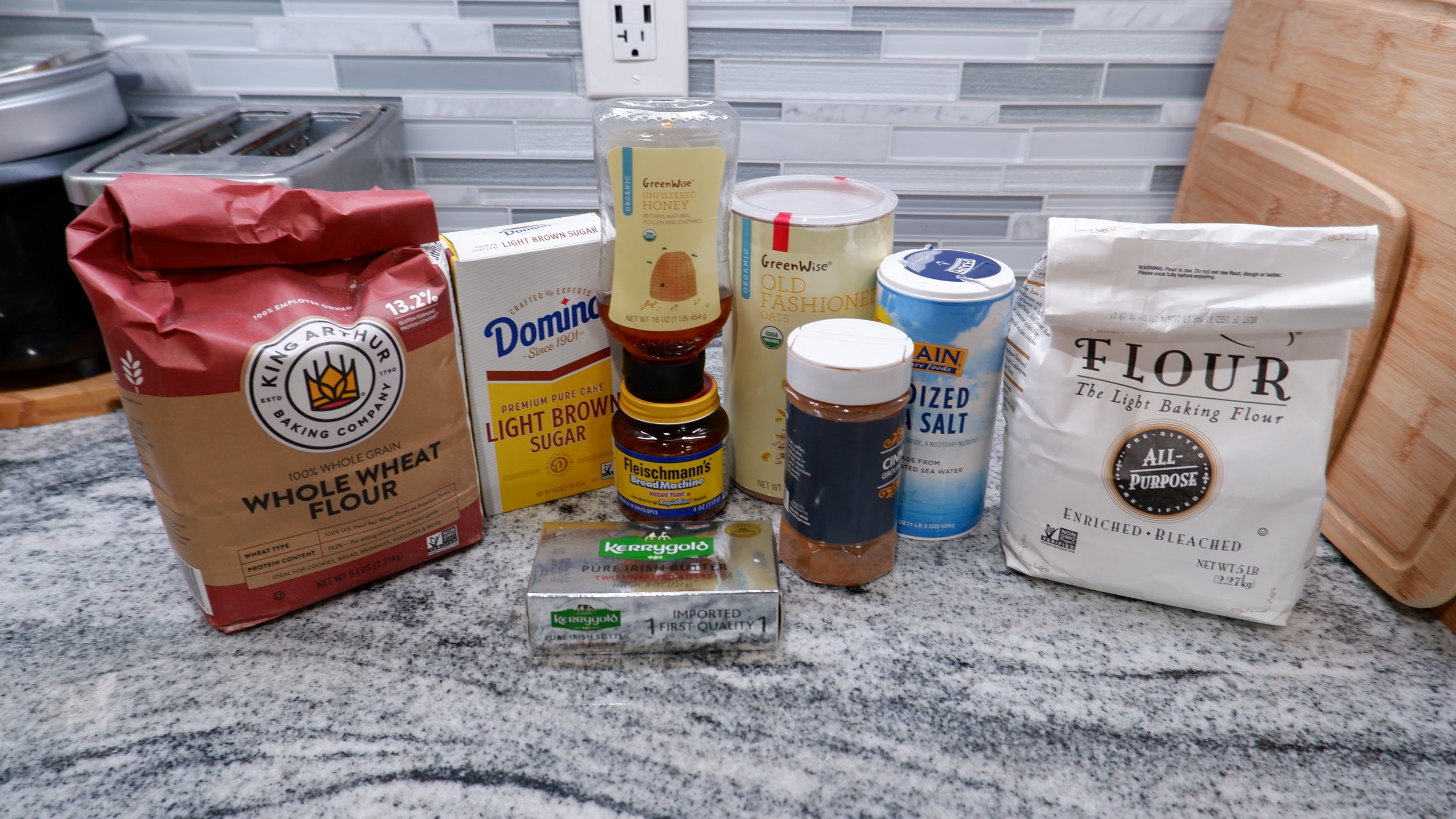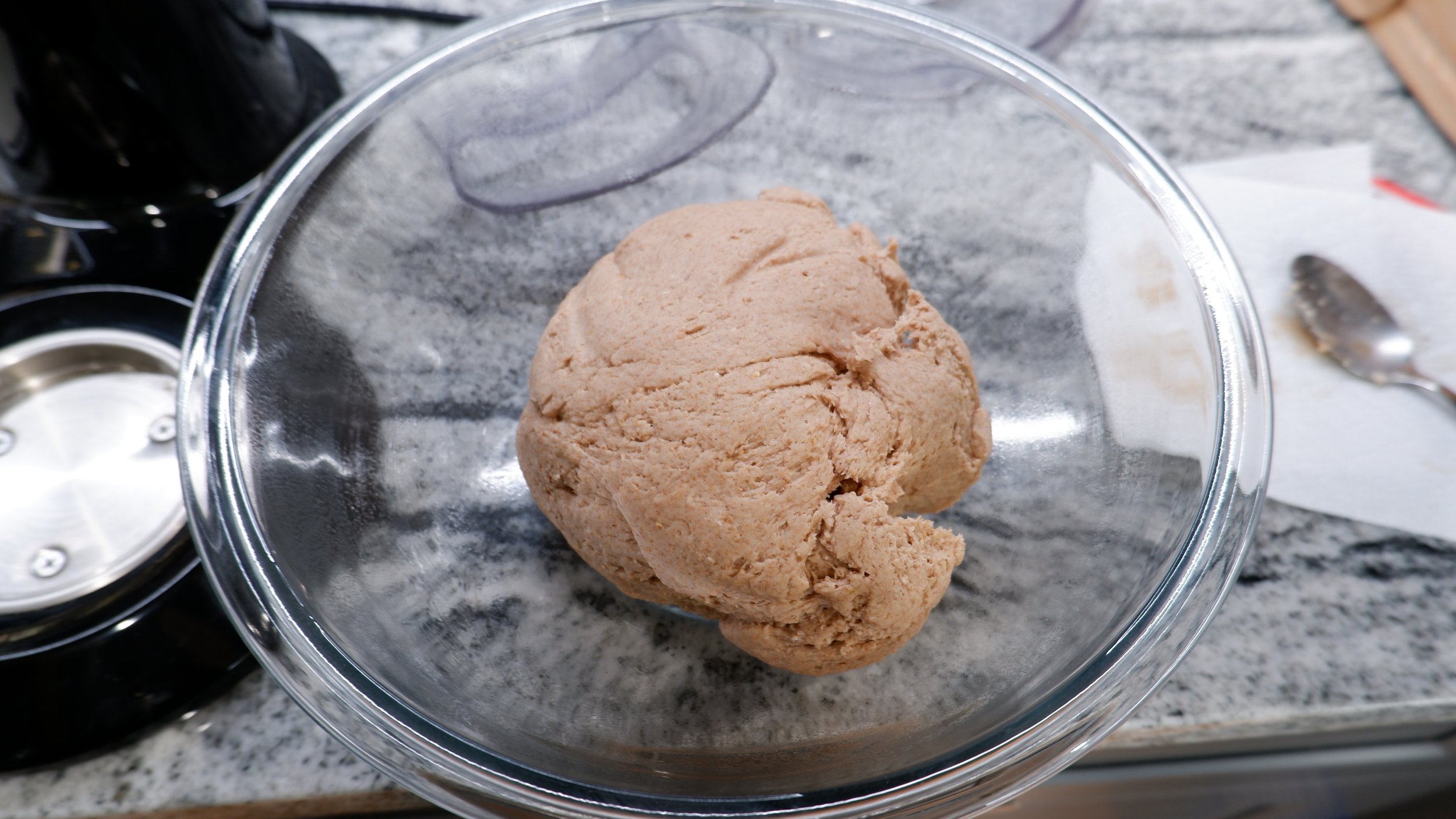Vermont Whole Wheat Honey Oat Bread
Looks pretty pedestrian
Time: 4 Hours 30 minutes
Ingredient Availability: 5/5
Difficulty: 1/5
For some reason, this bread really stood out to me when I saw it in the King Arthur’s Baker’s Companion Cookbook. Maybe it was just the idea of making my own honey oat bread that was exciting. Whatever it was, I gave it a try and I’ll let you know if you should give it a shot.
Key Ingredients & Omissions:
This bread is actually pretty simple as far as ingredients go. Of course, there are a few extra ingredients that set this recipe apart (oats, honey, cinnamon), but none are obscure or hard to find.
Tools:
Loaf Pans
Stand Mixer
Cooking Review:
Boiling Water Mixture: 36 minutes
To start, I had to boil some water, which took about 14 minutes. In the bowl of the stand mixer, I added all of ingredients but the flour and yeast. In a separate bowl, I mixed the flours and yeast together. I poured the boiling water over the mixture in the stand mixer bowl and mixed it together. I needed to wait about 22 minutes for the mixture to cool down to about 110 degrees Fahrenheit.
Mix Dough: 8 minutes
The flour mixture was added to the cooled oat mixture and stirred with a spoon for about 3 minutes until a shaggy dough was formed. I then used the dough hook to knead the dough on speed 4 for about 5 minutes. At that point, the dough was smooth and not very sticky. I transferred the dough to a lightly oiled bowl.
Rise, Form, & Rise: 2 Hours 40 Minutes
Once in the bowl, I let the dough rise for an hour covered. Then, I split the dough in half and formed one into a loaf. The recipe itself doesn’t give any instructions on how to form the dough, but earlier in the book, it mentions pressing out the air before forming, which is what I did. I pressed the two halves of dough and rolled one up into a loaf to put into the loaf pan. The other, I just put into a small square baking pan. I don’t think this was what you’re supposed to do with this dough, and I’ll explain in the analysis. Once the dough was formed in the pans, I let them rise for about an hour and a half.
Bake: 1 hour
I baked the bread in the square pan for only 37 minutes. The other loaf took just about a whole hour to reach the temperature recommended in the book.
Analysis:
While the flavor of this dough is pretty good, the texture is not. When fresh, there is a nice crunch to the crust, but we all know this is short-lived with bread. The flavor is slightly sweet and cinnamon-y and I quite like it. The problem is that the bread is very dense and can get somewhat gummy after chewing. It’s not so bad that it becomes inedible, but it’s not very pleasant. Toasting it helps a little, but the denseness is still a problem. I’m assuming that I wasn’t supposed to press out the air in the dough before the second rise, but this recipe has to detail that process more clearly than just saying to form the dough into loaves. Unless you’re a seasoned baker, you’re not going to know what specifically that entails. Because of that lack of detail, you might just end up with something like I did. I’m going to give this recipe a 5/10. I can tell that if the texture were right this would be very good. However, the recipe seems to leave you hanging at one of the most important parts of making this bread.


















